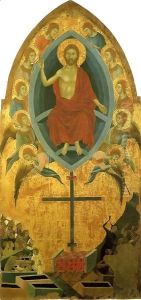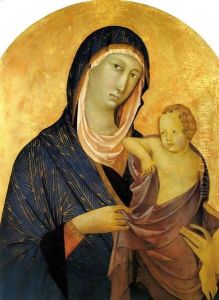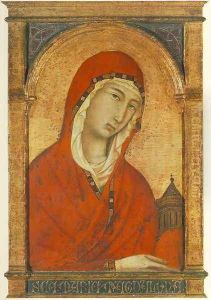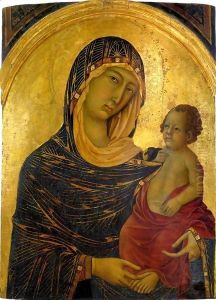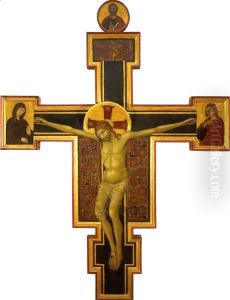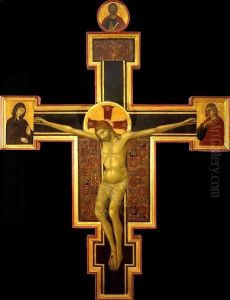Segna Di Buonaventure Paintings
Segna di Bonaventura, also known as Segna di Buonaventure, was an Italian painter of the Sienese School during the early 14th century. He was active from approximately 1298 to after 1331. Segna is often considered a conservative figure within the Sienese School, which was characterized by its continuation of Byzantine artistic traditions and resistance to the emerging naturalistic styles that were developing in Florence.
Segna was likely a pupil of Duccio di Buoninsegna, one of the most influential Sienese painters of his time. This connection is evident in Segna's style, which closely follows the formal and iconographic models established by Duccio. His works are known for their delicate lines, refined use of color, and gold leaf, which were typical of the period and of the Sienese tradition. Segna's paintings often depicted religious subjects, a common theme for the era, with a focus on narratives from the life of Christ and the Virgin Mary.
Although Segna's oeuvre is not extensive, some of his notable works include the 'Madonna and Child' now in the Pinacoteca Nazionale in Siena, and the 'Crucifix' in the Cathedral of Siena. His art reflects a transition period in Italian painting, where the Byzantine style was still prevalent, but new ideas were beginning to percolate through the work of artists like Giotto in Florence.
Segna's legacy is somewhat overshadowed by his more famous contemporaries and the generations of Sienese painters that followed, who embraced more innovative approaches to art. Nevertheless, his work provides valuable insight into the Sienese artistic environment in the early 14th century and the steadfastness of local traditions in the face of changing artistic tastes. Little is known about his life outside of his artistic production, and the exact date of his death is not recorded, but it is believed that he was still alive in 1331, as indicated by the last known signed work attributed to him.
